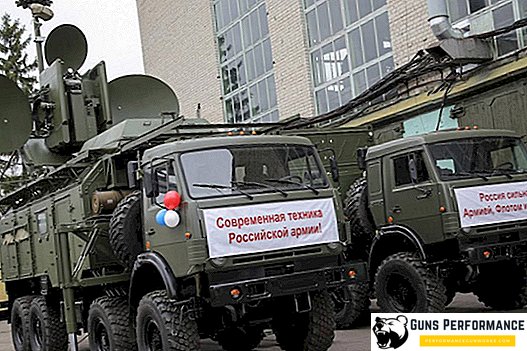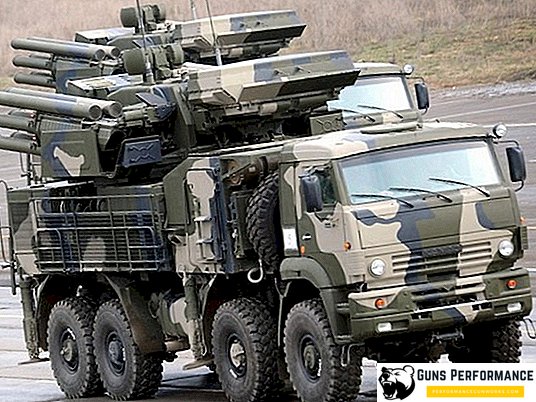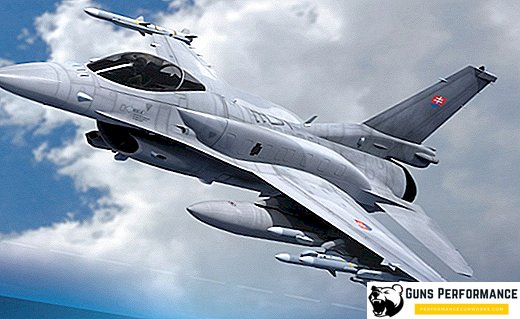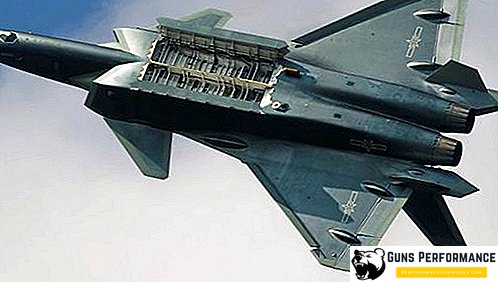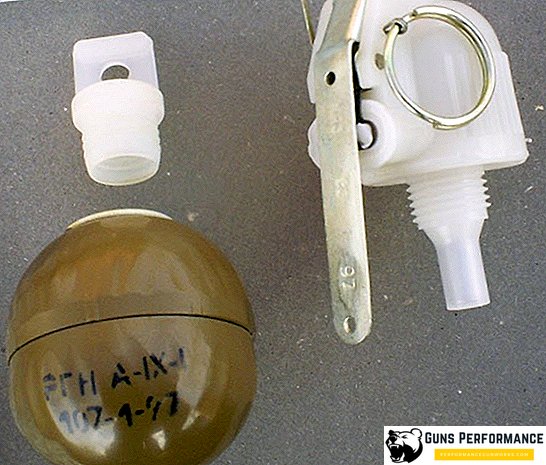
In 1954, a new RGD-5 defensive grenade was adopted by the Soviet army, which very soon supplanted its predecessor, the RG-42. Together with the famous "lemon" F-1, these two grenades became the most important element of the armament of any soldier of the Soviet and then the Russian army. They are used in our days.
These grenades are distinguished by their effectiveness and reliability, they are time-tested. In addition to the Russian army, F-1 and RGD-5 is currently used by all the armed forces of the former Soviet republics, as well as the armed forces of China, Iran and Bulgaria. They are very popular in Africa, Latin America and the Middle East. But despite this, it should be recognized that the F-1 and RGD-5 grenades are already morally obsolete.
Therefore, in the mid-70s, work began on creating hand grenades of a new generation. Designers were engaged in the GNPP "Basalt". In the early 80s, trials of two types of grenades started: the defensive RGO and the offensive RGN. In 1981, they were adopted by the Soviet army.

The main difference between these munitions and their predecessors is the shock-distance fuse, which is triggered when colliding with any solid surface, and not only after a certain period of time.
The RGN hand grenade is an anti-personnel fragmentation grenade, which belongs to an extensive group of offensive grenades. This means that the radius of dispersal of its fragments allows the use of this ammunition not only from cover. The percussion fuse of the RGN grenade significantly increases its efficiency and gives the enemy less chance to escape from the action of fragments.
Grenades RGN (like the RGO) were first used by Soviet troops in Afghanistan, then they were used during both Chechen campaigns and during the war with Georgia in 2008. There is information that the offensive grenades of the RGN use armed formations in the east of Ukraine.
History of creation
Hand grenade is known to man since ancient times. To manufacture such ammunition began almost immediately after the invention of gunpowder, but before the appearance of powerful blasting explosives to talk about the high efficiency of grenades was not necessary. At the beginning of the 15th century, their hulls were made of brittle cast iron, which, in an explosion, produced a significant amount of fragments. The main problem was the weak blasting effect of gunpowder, which is why hand grenades (they were called "Grenades") had to be made big and heavy.
Throw such ammunition (its weight ranged from one to four kilograms) could only physically well-trained fighter. No wonder the grenadier regiments were considered elite infantry units. Grenades were most often used during the assault or defense of the fortresses; they were also very effective in boarding battles.

In addition to the imperfection of gunpowder as an explosive, the early types of grenades had another major drawback - the fuse. For this purpose, most often used wooden tubes filled with gunpowder. Such a fuse could go out when it hit the ground, work sooner or later, or even detonate in the hands of a fighter. Calculate the exact time of the explosion was extremely problematic.
Due to the above disadvantages, by the middle of the XVIII century, grenades gradually went out of circulation, only a few assault units continue to use them, and grenades are in service with the fortress garrisons.
By the beginning of the 20th century, grenades were considered old, primitive and ineffective weapons. These munitions have practically not been used, and their design has not changed much since the 17th century. At the very end of the 19th century, the Russian Artillery Committee generally ordered the removal of hand grenades from the armament of the army, due to their unreliability and low efficiency. But in 1904, the Russian-Japanese war began - the first modern conflict, during which large-scale positional battles were fought. It was this war that showed that it was too early to write off a hand grenade.
It turned out that in a trench warfare grenade is one of the most effective types of weapons for close combat. And since neither the Russian nor the Japanese military industry produced hand grenades, the soldiers themselves had to start manufacturing them. Grenades were made from artillery shells, pipe scraps, and even bamboo poles. For example, in the besieged Port Arthur during its defense, almost 70 thousand hand grenades were manufactured.
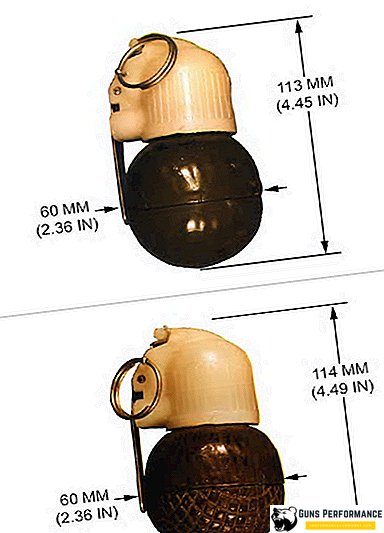
The military took into account the experience of the conflict in the Far East, so before the outbreak of the First World War, the main powers already had more or less successful samples of hand grenades in service. From the ammunition of that period, one can distinguish the English Mills Bomb No. 5 grenade and the French F-1. Russian industry has mastered the mass production of the Rdultovsky grenade, the reliability of the design of which, however, there were many complaints.
During World War I, the need for hand grenades was enormous and the domestic industry was absolutely not ready to satisfy it. For example, in the middle of 1915, the front “ate” 3.5 million grenades every month, of which domestic manufacturers could produce only 650 thousand pieces. Therefore, these munitions in large quantities were purchased from the allies.
In the 1920s, hundreds of thousands of F-1 French grenades remained in the military warehouses, which it was decided to modernize and use. So in 1928, the famous Soviet F1 appeared, which was a French ammunition with a Koveshnikov system ignition.
In 1941, a unified fuse was developed for hand grenades - UZRG, which was improved after the war. This is how the fuses of UZRGM and UZRGM-2 appeared, they are still used today in F-1 and RGD-5.
In the 70s in the USSR, work began on the creation of a new generation of hand grenades. They were engaged in the specialists of GNPP "Basalt". A big problem for the promotion of this project was the huge reserves of old grenades, which were stored in army warehouses. In addition, RGD-5 and F-1 have a simpler design and cost less.
In the early 1980s, the RGO and the RGN were put into service. The first batches of ammunition were immediately sent to Afghanistan. The Soviet fighters appreciated the advantage of the percussion fuse.

At present, the RGD-5 and F-1 remain the main grenades of the Russian army, the production of the RGO and the RGN is underway, but its volumes are clearly insufficient. New grenades are mainly used by various special units, they have established themselves as reliable and effective weapons.
Description of construction
The RGN manual grenade consists of a body and a UDZ igniter, which has two operation chains duplicating each other.
The ammunition body consists of two aluminum hemispheres with a diameter of 60 mm. Their inner part has notches, which cause the formation of fragments during the explosion. In this regard, the military has many complaints about the RGD-5. The fact is that an offensive grenade should not have a significant fragmentation of fragments, in which case it becomes dangerous for the soldier himself. In RGD-5, the fragments often flew to 20–30 meters, which is unacceptable. Due to the internal incision of the RGN, this problem was solved.
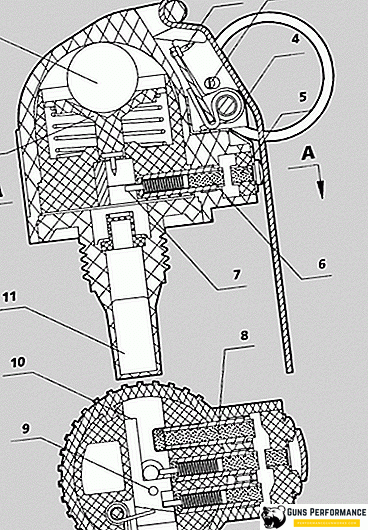
In the center of the grenade body there is a metal cup for tightening the fuse. A mixture of trotyl and hexogen is used as an explosive. Its mass is 112 grams; when the ammunition is detonated, 200-250 practically identical fragments are formed.
The main "highlight" of the RGN grenade is its UDS igniter.
After pulling out the checks and throwing the grenade, the safety lever releases the drummer. It rotates around an axis and punctures a special primer-igniter, the function of which includes the burning of three tubes with pyrotechnic compositions: a self-killer and two retarders.
After the combustible mixture inside the tubes burn out, special pins enter them under the action of the springs. This allows you to move in the direction of the safety engine, and the bowl with inertial load and primer-igniter drop down. Due to this, the capsule is supplied directly to the detonator - a grenade is mounted on a combat platoon and ready for detonation when it encounters any obstacle. The above processes take 1.3-1.8 seconds.
The main element of the shock of the fuse is the inertial load, which is a plastic ball with metal balls inside. He is responsible for the detonation of ammunition in a collision with an obstacle. When the grenade is in a non-combat position, the ball is tightly clamped between the bowl and the body. After the retarders fade, it gets space and can shift downward. Any blow leads to the fact that the ball moves the bowl, at the bottom of which is a needle hitting the primer.

A shock fuse may not work if the grenade gets into snow, sand, water, or just soft soil. In this case, the detonation occurs due to the third pipe of the self-liquidator. It burns in 3.2-4.2 seconds, it depends on the air temperature.
Fuse UDZ has a plastic case, but all its main elements are made of metal.


